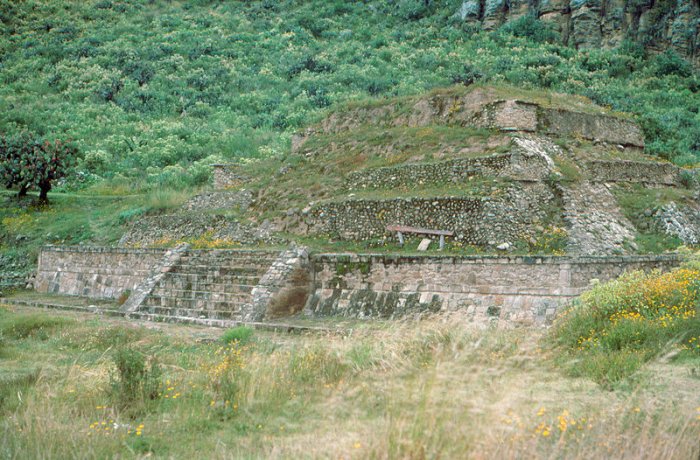Who Built The Mysterious Huapalcalco Pyramid – Mexico’s Smallest Pyramid?
Ellen Lloyd - AncientPages.com - Standing in central Mexico, the mysterious Huapalcalco pyramid remains an unsolved ancient mystery. Not only is it Mexico’s smallest pyramid, but it’s also unknown who built the structure. The Huapalcalco pyramid has been dated to around 800 B.C.
Left: Ehecatl, the snake-bird deity, and god of wind. Credit: Public Domain. Right: Huapalcalco pyramid. Credit: Public Domain.
Huapalcalco is considered the oldest human occupation site in the Hidalgo State and it is the second Toltec Empire, before Tula. The region was once an important civil, religious and housing center.
Huapalcalco was part of the Teotihuacán state, but there is an indication this place was inhabited by an unknown ancient culture.
While excavating in the area, archaeologists came across architecture and artifacts that are not the same as those of Teotihuacán. It is believed that Teotihuacán, most probably the largest city in the New World, had about 150,000 – 200,000 inhabitants at its height, but the builder of the Huapalcalco pyramid did not originate from Teotihuacán.
The Huapalcalco pyramid and stairway do not correspond to the Toltec or Teotihuacan cultures of the same area and time period. The three-bodied pyramid consists of 12 meters base by 8 meters high and an altar that possibly was used for offerings At the site, archaeologists found rough, cylindrical vessels that were gray and reddish-brown in color. This type of pottery is unknown to experts.
However, among the discovered artifacts there are figures depicted in a sitting position, with their hands placed on their knees. They have headdresses or conical hats with snakes at the base, which could represent Ehecatl, the snake-bird deity and god of wind, who was feared and respected by the Aztecs.
Scientists have suggested that the artifacts found near the Huapalcalco pyramid, could indicate this enigmatic ancient structure was built by people from a new culture who lived in this region. Unfortunately, it’s unknown who these people were and so is the purpose of the Huapalcalco pyramid.
Huapalcalco Pyramid. Credit: Public Domain
According to Thomas Charlton, an archaeologist at the University of Iowa, it’s reasonable to think that the site was occupied by an ancient culture that existed between the fall of the Teotihuacán and the beginning of the Tula (Toltec).
It’s not really surprising that the Huapalcalco pyramid was built by a group of ancient people we know nothing about. Michael Smith, an archaeologist at Arizona State University remarked it was a very creative period, with rich development and that it’s perfectly normal that an independent ancient culture could have emerged in this part of the world.
The Huapalcalco pyramid is small and far from as famous as other pyramids around the world, but it’s certainly not insignificant. If scientists could learn who its builders were, then it would be possible to fill a missing gap in the ancient history of Mexico.
Written by Ellen Lloyd – AncientPages.com
Copyright © AncientPages.com All rights reserved. This material may not be published, broadcast, rewritten or redistributed in whole or part without the express written permission of AncientPages.com
More From Ancient Pages
-
 Is A Viking Ship Hidden In The Colorado Desert?
Featured Stories | Jan 8, 2018
Is A Viking Ship Hidden In The Colorado Desert?
Featured Stories | Jan 8, 2018 -
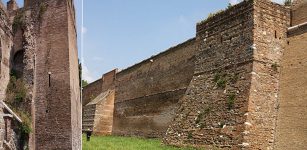 Aurelian Walls Built By Emperor Aurelian Who Tried To Lead Roman Empire Out Of The Crisis
Featured Stories | Apr 16, 2018
Aurelian Walls Built By Emperor Aurelian Who Tried To Lead Roman Empire Out Of The Crisis
Featured Stories | Apr 16, 2018 -
 Oldest Writing System Among Slavs To Be Germanic Runes – New Study
News | Feb 15, 2021
Oldest Writing System Among Slavs To Be Germanic Runes – New Study
News | Feb 15, 2021 -
 Evidence For A Divergence Between Eastern And Western Mediterranean Indo-European Languages Finally Provided By Ancient Genomics Study
Archaeology | Jan 4, 2025
Evidence For A Divergence Between Eastern And Western Mediterranean Indo-European Languages Finally Provided By Ancient Genomics Study
Archaeology | Jan 4, 2025 -
 Satellite Images Reveal A Mysterious Ancient Site On A Remote Island Is Much Larger Than Previously Thought, Prompting New Questions
Archaeology | Nov 28, 2024
Satellite Images Reveal A Mysterious Ancient Site On A Remote Island Is Much Larger Than Previously Thought, Prompting New Questions
Archaeology | Nov 28, 2024 -
 Unorthodox Ancient ‘Out-Of-This World’ Carvings Were Found And Destroyed – Mysterious Labyrinth And Unknown Ruins – Part 2
Ancient Mysteries | Aug 13, 2020
Unorthodox Ancient ‘Out-Of-This World’ Carvings Were Found And Destroyed – Mysterious Labyrinth And Unknown Ruins – Part 2
Ancient Mysteries | Aug 13, 2020 -
 Remains Of A 2,200-Year-Old Roman Fountain Discovered In Assos, Turkey
Archaeology | Aug 17, 2022
Remains Of A 2,200-Year-Old Roman Fountain Discovered In Assos, Turkey
Archaeology | Aug 17, 2022 -
 Unique Study Of Skeletal Remains Reveals Grave Health Of Australian Pioneer Settlers
Archaeology | Apr 7, 2022
Unique Study Of Skeletal Remains Reveals Grave Health Of Australian Pioneer Settlers
Archaeology | Apr 7, 2022 -
 Advanced Flying Machines And Interplanetary Travel Described 7000 Years Ago In India
Civilizations | Aug 20, 2015
Advanced Flying Machines And Interplanetary Travel Described 7000 Years Ago In India
Civilizations | Aug 20, 2015 -
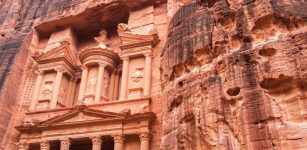 Researchers Sequenced 137 Human Genomes From The Middle East
Archaeology | Aug 6, 2021
Researchers Sequenced 137 Human Genomes From The Middle East
Archaeology | Aug 6, 2021 -
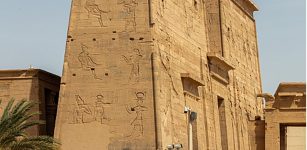 Researchers Use 21st Century Methods To Record 2,000 Years Of Ancient Graffiti In Egypt
Archaeology | Mar 31, 2023
Researchers Use 21st Century Methods To Record 2,000 Years Of Ancient Graffiti In Egypt
Archaeology | Mar 31, 2023 -
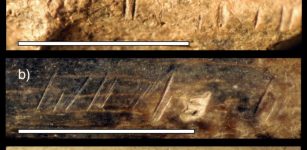 Humans’ Evolutionary Relatives Butchered One Another 1.45 Million Years Ago
Ancient Symbols | Jun 26, 2023
Humans’ Evolutionary Relatives Butchered One Another 1.45 Million Years Ago
Ancient Symbols | Jun 26, 2023 -
 Cannabis Protected India’s Famous Ellora Caves From Decay For 1,500 Years
Archaeology | Mar 12, 2016
Cannabis Protected India’s Famous Ellora Caves From Decay For 1,500 Years
Archaeology | Mar 12, 2016 -
 Solar Cult Complex In The Temple Of Hatshepsut In Deir El-Bahari Reconstructed
Archaeology | Mar 2, 2015
Solar Cult Complex In The Temple Of Hatshepsut In Deir El-Bahari Reconstructed
Archaeology | Mar 2, 2015 -
 Arimaspians: Mysterious Mighty Warriors With One-Eye
Featured Stories | Mar 9, 2021
Arimaspians: Mysterious Mighty Warriors With One-Eye
Featured Stories | Mar 9, 2021 -
 Afterlife Of Egyptian Religious Statues Intentionally Hidden In The Temple Of Ptah At Karnak
Archaeology | Sep 22, 2017
Afterlife Of Egyptian Religious Statues Intentionally Hidden In The Temple Of Ptah At Karnak
Archaeology | Sep 22, 2017 -
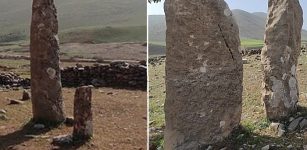 Unique Headstones Of Kela Mazin Cemetery In Kurdistan Are Probably 3,000 Years Old Or Much More
Archaeology | May 7, 2022
Unique Headstones Of Kela Mazin Cemetery In Kurdistan Are Probably 3,000 Years Old Or Much More
Archaeology | May 7, 2022 -
 Ancient Roman Government Structure And The Twelve Tables
Ancient History Facts | Jan 18, 2016
Ancient Roman Government Structure And The Twelve Tables
Ancient History Facts | Jan 18, 2016 -
 Human DNA Shaped By Past Events Caused Sharp Dips In The Population
News | Jun 27, 2022
Human DNA Shaped By Past Events Caused Sharp Dips In The Population
News | Jun 27, 2022 -
 Nilometer: Innovative Tool Measuring The Nile’s Water Levels In Pharaonic Egypt
Featured Stories | Jun 1, 2024
Nilometer: Innovative Tool Measuring The Nile’s Water Levels In Pharaonic Egypt
Featured Stories | Jun 1, 2024


